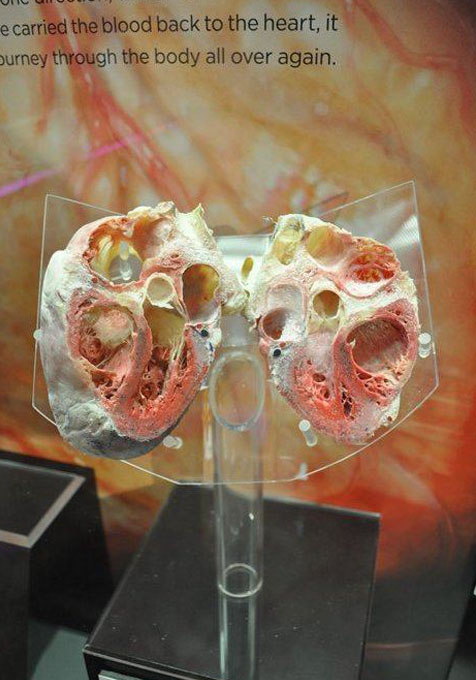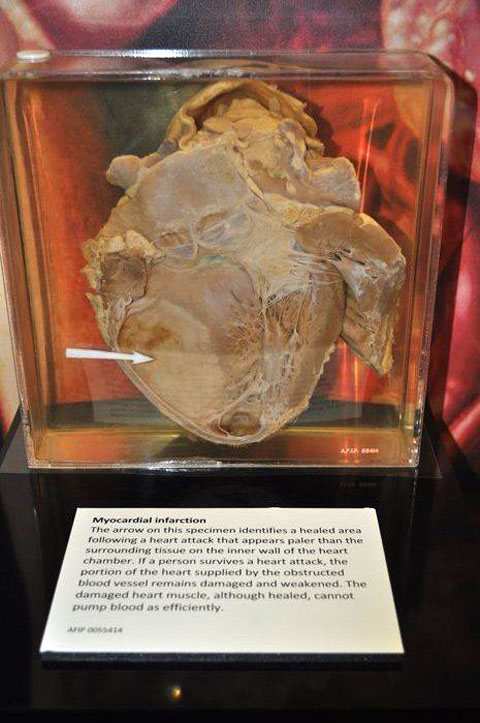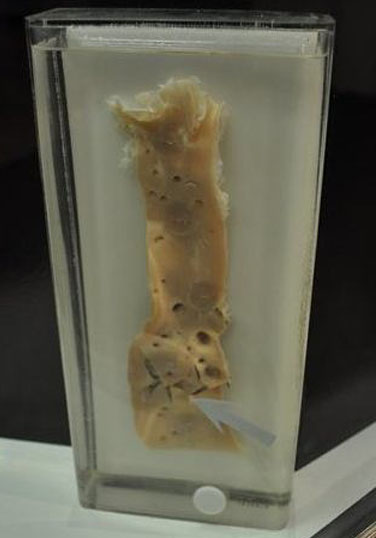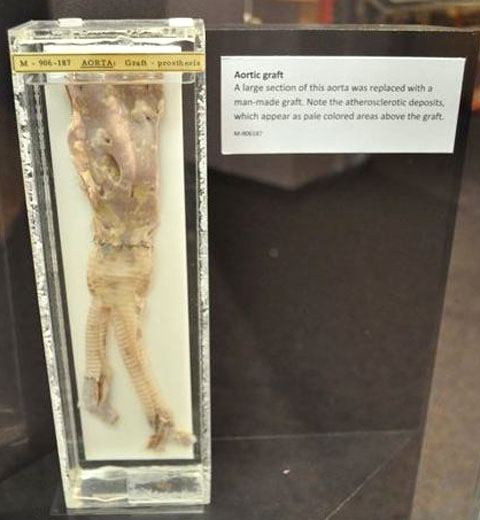Visibly Human Health and Disease in the Human Body
The Cardiovascular System
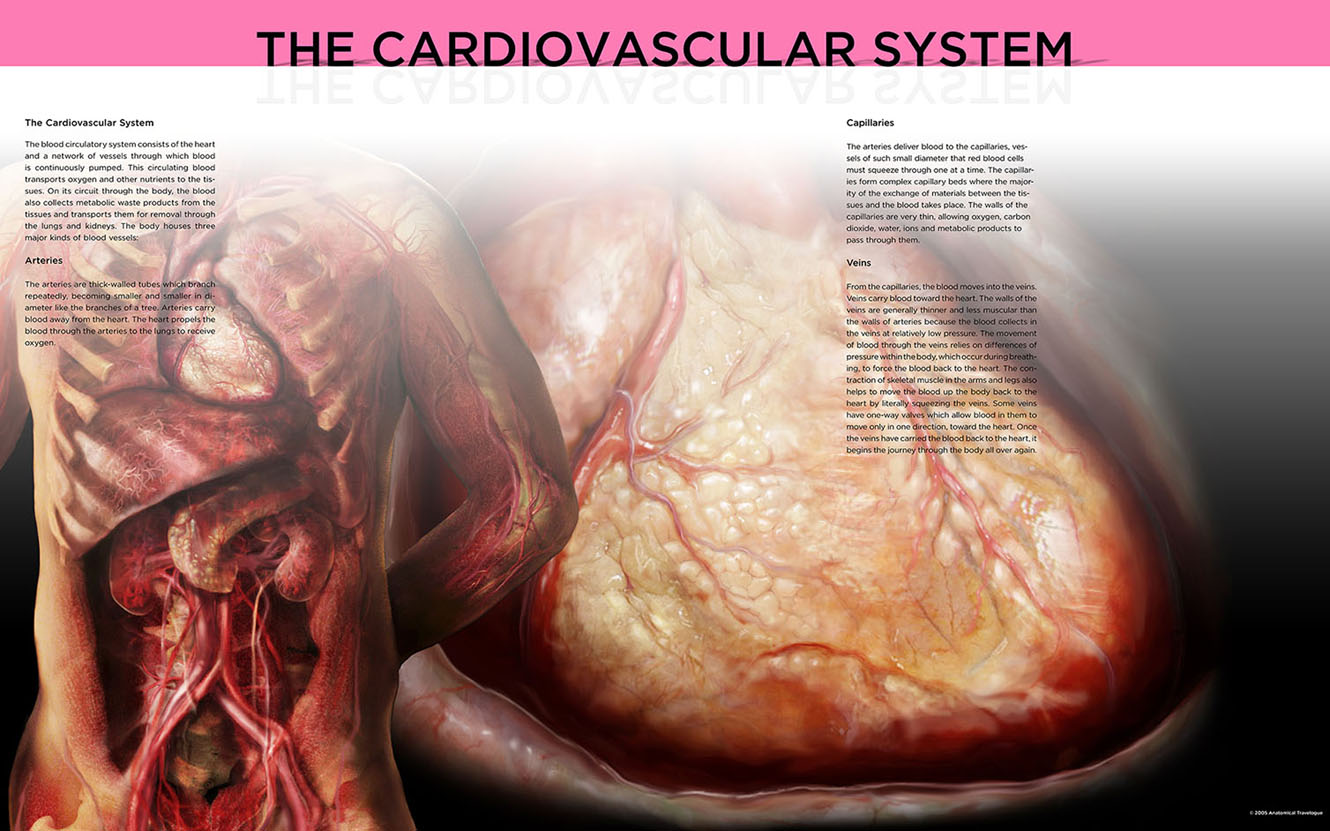 The blood circulatory system consists of the heart and a network of vessels through which blood is continuously pumped. This circulating blood transports oxygen and other nutrients to the tissues. On its circuit through the body, the blood also collects metabolic waste products from the tissues and transports them for removal through the lungs and kidneys. The body houses three major kinds of blood vessels:
The blood circulatory system consists of the heart and a network of vessels through which blood is continuously pumped. This circulating blood transports oxygen and other nutrients to the tissues. On its circuit through the body, the blood also collects metabolic waste products from the tissues and transports them for removal through the lungs and kidneys. The body houses three major kinds of blood vessels:
Veins
From the capillaries, the blood moves into the veins. Veins carry blood toward the heart. The walls of the veins are generally thinner and less muscular than the walls of arteries because the blood collects in the veins at relatively low pressure. The movement of blood through the veins relies on differences of pressure within the body, which occur during breathing, to force the blood back to the heart. The contraction of skeletal muscle in the arms and legs also helps to move the blood up the body back to the heart by literally squeezing the veins. Some veins have one-way valves which allow blood in them to move only in one direction, toward the heart. Once the veins have carried the blood back to the heart, it begins the journey through the body all over again.
Arteries
The arteries are thick-walled tubes which branch repeatedly, becoming smaller and smaller in diameter like the branches of a tree. Arteries carry blood away from the heart. The heart propels the blood through the arteries to the lungs to receive oxygen.
Capillaries
The arteries deliver blood to the capillaries, vessels of such small diameter that red blood cells must squeeze through one at a time. The capillaries form complex capillary beds where the majority of the exchange of materials between the tissues and the blood takes place. The walls of the capillaries are very thin, allowing oxygen, carbon dioxide, water, ions and metabolic products to pass through them.

- Visibly Human Health and Disease in the Human Body
- The Cardiovascular System
- The Urinary System
- Respiratory System
- The Lymphatic System
- The Musculoskeletal System
- The Liver and Hepatic System
- The Digestive System
- The Brain and Nervous System
- Psychiatric Patients at Forest Glen
- Skeleton of Spanish American War Veteran Showing Evidence of Severe Arthritis




